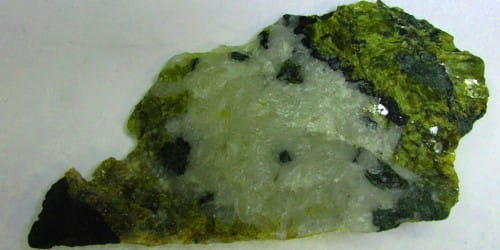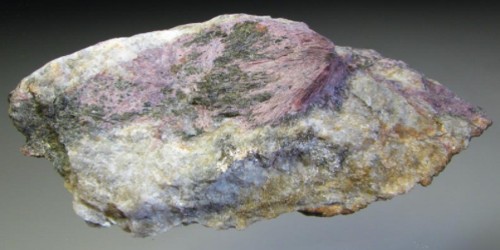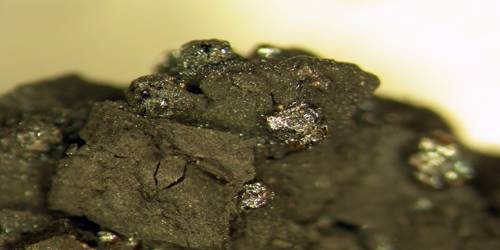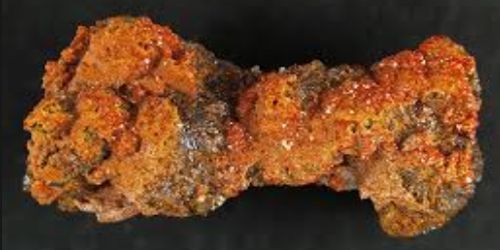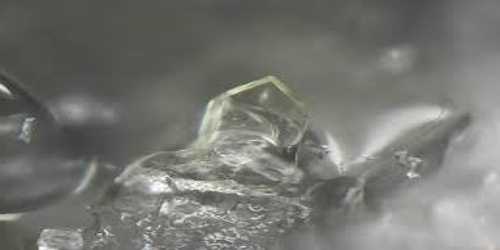Lulzacite is a strontium-containing phosphate mineral with the chemical formula Sr2Fe2+(Fe2+, Mg)2Al4(PO4)4(OH)10. It is a triclinic-pinacoidal mineral containing aluminum, hydrogen, iron, magnesium, oxygen, phosphorus, and strontium. It occurs there as a dark grey to green granular aggregates within an Ordovician quartzite.
It was named for the discoverer of the mineral, Y. Lulzac. Found only at the type locality at the Bois-de-la-Roche quarry in Pays de Loire in France.
General Information
- Category: Phosphate minerals
- Formula: Sr2Fe2+(Fe2+,Mg)2Al4(PO4)4(OH)10
- Crystal system: Triclinic
- Crystal class: Pinacoidal (1)
- Color: Grayish-green to yellowish-green.

Properties
Lulzacite is a very rare, one-locality, strontium – Fe-Al phosphate found with siderite. The Lulzacite is the glassy bluish grey, compact and massive areas on this specimen.
- Crystal habit: Anhedral aggregates; rarely small euhedral crystals
- Cleavage: None
- Mohs scale hardness: 5.5–6
- Luster: Vitreous
- Diaphaneity: Transparent–translucent
- Specific gravity: 3.55
- Optical properties: Biaxial (−)
Occurrences
It occurs in veins of quartz and siderite, with pyrite, apatite, and goyazite.
The mineral was first described in 2000 from quartzite deposits (47°42′50″N 1°29′20″W) at Saint-Aubin-des-Châteaux, Loire-Atlantique, France, and is named after Y. Lulzac, a French geologist who discovered the mineral. In this deposit, lulzacite occurs within quartz and siderite veinlets at quartzite–limestone contacts. Other minerals found in the veinlets include apatite, goyazite, and pyrite.
Information Source:
